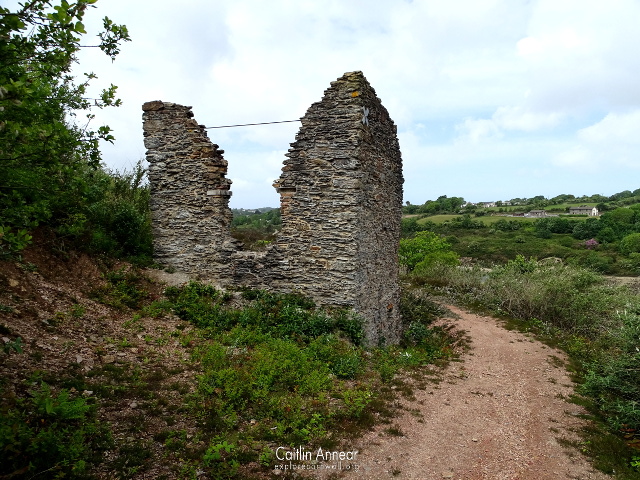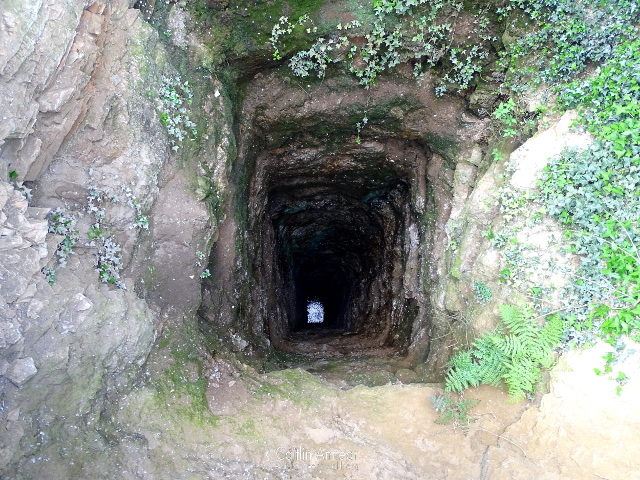Stretching from Carharrack to Twelveheads sits the large sett of one of the greatest mines in Cornish history. The Great Consolidated mines was made up of numerous smaller ventures and during a period of its life produced more profits that Dolcoath mine.

Records for the area begin in the 1700’s, with Wheal Virgin already being at work. It was in 1780 that Wheal Virgin, East and West Wheal Virgin, Wheal Maid, Wheal Girl, Wheal Fortune and Cuzvey were amalgamated as Great Consolidated Mines. Even at this early point in time there were already seven Newcomen engines working; these were promptly replaced by five new Watt engines to help battled the water that plagued the mine.
Work was steady until 1805 when copper prices dropped, and did not reopen until 1819. It was this reopening that sparked the great success Consols was to become; under the management of John Taylor and his £65,000 (£2,864,738 now) from London shareholders work began again in earnest. It was under Taylor’s care that Consols became a rich and profitable mine, producing more than Dolcoath for a spell, a significant feat. Five years later the mine was linked to Devoran port via the Redruth to Chacewater railway, making the sale of ore easier.

In 1839 Taylor went to renew his lease for Consols, but was refused and he had the mine picked clean, removing as much ore from above and below ground as possible. This was the turning point for mine with production declining over the following years. In 1857 it was officially amalgamated with United Mines to form Clifford Amalgamated Mines. As work progressed on the site and the miners reached ever deeper ground, the temperatures quickly became unbearable, with some of the lower levels reaching 96 °F (36°C).
When the mine finally closed in 1870 it still had twenty engines at work, including nine pumping engines, seven whims, one man engine and a crusher. Once the pumps were turned off it didn’t take long for the lower levels to quickly fill with water. There were two attempts at reworking the mine at later dates. Between 1899-1905 Gwennap United tried to rework the dumps, but this was fairly unsuccessful and from 1834-41 and 1969-81 Mount Wellington also had a go, which again proved unsuccessful.

Davey’s whim. It’s pumping engine was destroyed to make room for the road below.
Taylor’s (230 fathom/421m), Taylor’s whim (230 fathoms/421m), Davey’s (274 fathoms/501m), Davey’s whim (250 fathoms/457m), Job (195 fathoms/357m), Woolf’s (245 fathoms/448m), Woolf’s whim, Old Sump, Skewes, Michell’s, Pearce’s (260 fathoms/475m), Elvan’s (210 fathoms/384m), Terrill’s (135 fathoms/247m), Bawden’s (220 fathoms/402m), Francis’ (205 fathom/375m), Paul’s (100 fathoms/183m), Thomas’ (90 fathoms/165m), Butson’s (90 fathoms/165m), Noel’s (90 fathoms/165m), Whitford’s (135 fathoms/245m), Morcom’s (200 fathoms/366m), Tegoning’s (110 fathoms/201m), Deeble’s (264 fathoms/483m), Decant, Gribble’s, Lanyon’s, Footway, Horn’s, Andrew’s, Lovelace whim, William’s and Water.
Virgin/Fortune, Paul’s, North, Taylor’s, Glover’s, Tregoning’s, Pearce’s South, South.
West Wheal Virgin 1819
90 tons (91,444 kg) of 5% copper
Wheal Virgin 1821-47
22,974 tons (23,342,662 kg) of 7% copper
Great Consols 1815-57
442,400 tons (449,499,152 kg) 8.5% copper
32 tons (32,514 kg) black tin
7.5 tons (7,620 kg) arsenic
1,050 tons (1,066,849 kg) pyrite
60 ton (60,963 kg) of zinc
1782 – Watt engine
1788 – 20″ double acting engine. Pumped on W Virgin site.
1788 – underground pumping engine.
1821 – 90″ from Neath Abbey Ironworks on Bawden’s, Wheal Fortune.
1821 – 90″ from Neath Abbey Ironworks on Job shaft.
1826 – 90″ from Wheal Alfred onto Woolf’s shaft.
1827 – 70″ engine on Taylor’ shaft.
1828 – 58″ (or 65″) on Pearce’s
1832 – 80″ on Davey’s shaft.
1833 – 70″ increased to 85″ on Taylor’s shaft.
1784 – whim engine
1836 – 24″ on Taylor’s whim shaft
?1835 – all enclosed whim on Davey’s shaft.
? – 26″ on France’s shaft.
At least three other whims at the mines closure.
There is evidence of at least one stamps and one man engine.

Access is available to the whole site from public footpaths that run throughout, as well as a right to roam over the whole area. The engine houses and several of the shafts have been consolidated/capped, but others are still unstable, so care should be taken.
There is a small amount of parking in the villages of Twelveheads and Carharrack.
Brown, K. and Acton, B. (2007) Exploring Cornish Mines: Volume One. 4th edn. Truro: Landfall.
Cornwall Archaeological Unit (1991) Engine House Assessment: Mineral Tramways Project. Available at: http://map.cornwall.gov.uk/reports_event_record/1991/1991R008.pdf (Accessed: 17 March 2018).
Dines, H. G. (1956) The metalliferous mining regions of south-west England. British Geological Survey.
Hamilton-Jenkin, A. K. (1963) Mines and Miners of Cornwall: VI Around Gwennap. Truro: Truro Bookshop.
Nance, D. and Brown, K. (2014) A complete guide to the engine houses of West Cornwall. Gloucestershire: Lightmoor Press.
Smith, J. (1995) Wheal Maid, United Downs. Available at: http://map.cornwall.gov.uk/reports_event_record/1995/1995R041.pdf (Accessed: 22 May 2020).







